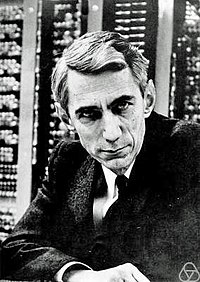The Shannon number, named after the American mathematician Claude Shannon, is a conservative lower bound of the game-tree complexity of chess of 10120, based on an average of about 103 possibilities for a pair of moves consisting of a move for White followed by a move for Black, and a typical game lasting about 40 such pairs of moves.
Shannon’s calculation
Shannon showed a calculation for the lower bound of the game-tree complexity of chess, resulting in about 10120 possible games, to demonstrate the impracticality of solving chess by brute force, in his 1950 paper “Programming a Computer for Playing Chess”.[1] (This influential paper introduced the field of computer chess.)
Shannon also estimated the number of possible positions, “of the general order of 64 ! 32 ! 8 ! 2 2 ! 6 
| Number of plies (half-moves) | Number of possible positions | Number of checkmates |
|---|---|---|
| 1 | 20 | 0 |
| 2 | 400 | 0 |
| 3 | 8,902 | 0 |
| 4 | 197,281 | 8 |
| 5 | 4,865,609 | 347 |
| 6 | 119,060,324 | 10,828 |
| 7 | 3,195,901,860 | 435,767 |
| 8 | 84,998,978,956 | 9,852,036 |
| 9 | 2,439,530,234,167 | 400,191,963 |
| 10 | 69,352,859,712,417 | 8,790,619,155 |
| 11 | 2,097,651,003,696,806 | 362,290,010,907 |
| 12 | 62,854,969,236,701,747 | 8,361,091,858,959 |
| 13 | 1,981,066,775,000,396,239 | 346,742,245,764,219 |
| 14 | 61,885,021,521,585,529,237 | |
| 15 | 2,015,099,950,053,364,471,960 |
After each player has moved a piece 5 times each (10 ply) there are 69,352,859,712,417 possible games that could have been played.
From Wikipedia, the free encyclopedia






